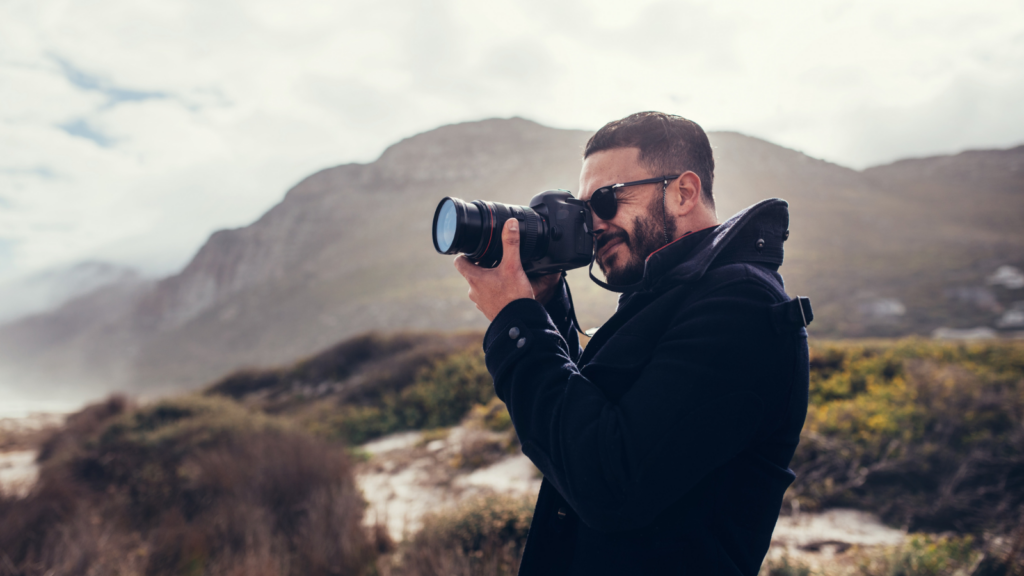In the fascinating world of photography, there’s more than meets the eye. It’s not just about capturing moments, it’s about encapsulating emotions, telling stories, and creating art. This article delves into the captivating realm of interesting photography, exploring its various facets.
Interesting Photography
Interesting photography sparks curiosity, inspires creativity, and leaves lasting impressions. It’s more than mere images, rather, it’s a fascinating intersection of art, emotion, and storytelling.
What Makes Photography Interesting

Factors such as depth, perspective, and emotion contribute to interesting photography. Attention-grabbing images often contain striking colors or patterns–think vibrant reds of poppies or the geometric shapes in city architecture. Additionally, pictures that tell a story–a child’s laugh, a weathered hand, a serene sunrise–capture viewers’ emotions, accentuating the interesting aspects.
Enhancing Your Photography Skills
Building on the established foundation of photography highlights, delve into the realm of technical enhancement. Learn to improve your skills and make your photographs more captivating and engaging.
Techniques to Improve Your Photography
Enhancing a photographer’s skill set often involves adopting advanced techniques. Mastering the rule of thirds, exploiting different lighting conditions, and using depth of field strategically can transform basic shots into compelling compositions. For instance, nighttime photography poses challenges in lighting yet provides opportunities for creating unique images with light trails or star trails. Similarly, mastering shallow depth of field gives portraits a professional feel by blurring backgrounds and focusing attention on the subject.
Tools that Can Make Your Photography Interesting

Supplementing technical proficiency with the right tools can drastically enhance photo quality. A diverse suite of lenses can cater to different photography genres, with wide-angle lenses perfect for capturing extensive landscapes and telephoto lenses ideal for wildlife photography. Additionally, editing software such as Adobe Photoshop and Lightroom provide photographers with the ability to fine-tune details, correct colors, and incorporate impactful effects. For example, HDR (High Dynamic Range) processing can bring out the details in very bright and dark areas of a photo, amplifying the image’s overall impact.
Interesting Genres of Photography
Diversity marks photography’s landscape, its multitudes manifesting in varying genres. Let us delve into three compelling categories: landscape, street, and conceptual photography.
Landscape Photography
In landscape photography, photographers encapsulate nature’s prowess. They perfect timing to capture golden hour light, dramatically casting mountains into silhouette. An image of Yosemite or the fjords of Norway, for example, exhibit the genre’s aptitude for illustrating majestic scenes. Techniques such as long exposure yield breath-taking waterfall photos, where water appears silky against rugged rocks. Landscape photography serves as a reminder of the planet’s vast beauty and the significant role of photographers in preserving these moments.
Street Photography
Street photography encapsulates life’s unplanned moments. Photographers become observers, hunting for emotion, interaction, or contradiction in urban settings. Istanbul’s bustling Grand Bazaar or New York’s frenetic Times Square provide abundant opportunities for capturing compelling, human-centric imagery. This genre thrives on spontaneity and a keen eye for detail. Whether documenting stories of everyday heroes or highlighting societal issues, street photographers lay bare the heart of city life.
Conceptual Photography

Conceptual photography invites viewers to peer beneath the surface. Predominantly narrative-driven, it constructs visual metaphors to convey complex ideas. An image of a broken mirror, for instance, could symbolize self-perception or identity crises. The genre’s strength lies in its intentional ambiguity, urging audiences to engage and interpret the underlying message. Conceptual photographers are storytellers who use their camera as a medium to provoke thought and elicit emotion.
Embracing Creativity
Photography’s an art form that’s as diverse as it’s captivating. It’s not just about capturing moments, but about encapsulating emotions, narrating stories, and showcasing creativity. The techniques and principles discussed, like the rule of thirds, balance, symmetry, and the use of depth, are key to creating images that resonate. The article’s also shown how the right tools, from diverse lenses to editing software, can enhance your photography.
Genres like landscape, street, and conceptual photography each offer unique storytelling opportunities, allowing photographers to express their unique perspectives. The examples of iconic and smartphone photography underscore the power and accessibility of this art form. Embrace these principles, and you’ll be well on your way to creating captivating photographs that leave a lasting impact.



